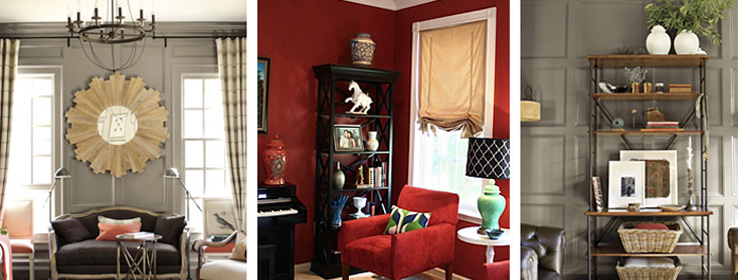Designing for today's casual lifestyles.
I grew up in an East Coast colonial home. My mother took great pride in decorating both the dining room and the living room with traditional furniture and beautiful artwork, and she painted the walls a distinct shade of powder blue. We often had large family dinners, so the dining room had its fair share of activity. However, the living room – with its velvet sofa and chairs and ornate lamps – was only used on rare special occasions. As a child, this room intrigued me because of its "off limits" status.
Fast-forward to my adulthood: When my husband and I purchased our single-family home, I fell right in line with tradition. I decorated the living room with plush seating, painted the walls a subtle color and €¦ guess what? We never used the room. I did what I saw in the past and not what made sense for the present. Today, what used to be our living room is now the piano room. Gone are the classic furniture pieces and in their place are a pair of modern chairs, a large desk, bookshelves and a piano. This room has become a hot spot for conversation and coffee, and my kids use it for homework and music lessons. We spend time here every day, and with its crimson wall color, the room now has the energy it once lacked.
As a designer, I'm finding this type of transformation is not uncommon. Today's lifestyles are becoming much less formal and much more hectic. As a result, designers are challenged with helping busy homeowners create multifunctional spaces that are casual and livable. This informal style is what's being called the "new traditional."
"Less formal is what everybody craves, but [it's a look] they may not be able to create themselves," says Jill Sharp Brinson, stylist and creative director of Jill Sharp Style. Sharp Brinson works with home furnishings company Ballard Designs and she's the creative force behind the beautifully styled images in their catalogs. Recently, the company called on her to design a makeover for a young family that was stumped on how to turn their unused living room into a welcoming space.
As part of the makeover, Sharp Brinson changed this traditional room into a chic salon. By incorporating separate, cozy seating groups along with durable fabrics and a lived-in aesthetic, she designed an inviting and comfortable room where the couple both entertains and hangs out to relax with their three young children.
"I think that a lot of labeled rooms in houses don't allow people flexibility. Living rooms and dining rooms are often perfect examples," explains Sharp Brinson. "We still reflect on spaces that we weren't encouraged to go in as children, and somehow, that bias sticks with us as we grow up and start to make homes of our own."
The tide is certainly changing, and not just for young couples or busy families with a full house. Business owner Libby Wilkie and her husband are empty-nesters. When they recently moved into their new home in North Carolina, they immediately converted the dining room into a home office for Wilkie's husband. The transformation included constructing a wall between the new office and the living room and adding double French doors off the foyer for privacy.
"I have my office upstairs and my husband had to have his own, separate space," says Wilkie, who owns an art licensing business and authors the blog An Eye For Detail. "Even in our small New York City apartment, we had separate work spaces. We know this is a critical element of any house we have."
The Wilkies only used the formal dining room in their former home on holidays and birthdays. Once they moved away from family, and with their adult daughter on her own, the Wilkies knew their changed lifestyle didn't require a traditional dining room. "We live outside more now that we're in the South, and cocktail parties are more the norm than formal dinner parties," says Wilkie.
So, with a diverse group of homeowners moving towards a more casual lifestyle, I asked Sharp Brinson for a few styling secrets for taking a room from formal to everyday friendly. For the dining room, she suggests removing some or all of the dining chairs and replacing them with chairs that aren't typical for dining, such as wing chairs (I think stylish office chairs would work great, too). "What this does is cause clients to rethink how they'll use the space – whether that means using it for working on a laptop, reading the newspaper or having a cozy supper," explains Sharp Brinson. She also recommends helping clients create a tablescape using their favorite items, which makes the dining table more approachable and inviting.
Finally, I pondered what role color plays in all of this, because I don't believe there are formal colors versus casual colors. For example, I used red in my piano room, but I've also used it in spaces that were much more elaborate. And both Sharp Brinson and Wilkie use lots of earthy, organic colors in their designs that would look great in any type of space. As Sharp Brinson puts it, "Maybe certain values and vibrancies of color can suggest formal versus casual, but color in general is really an amazing tool that can be used so many, many different ways."








